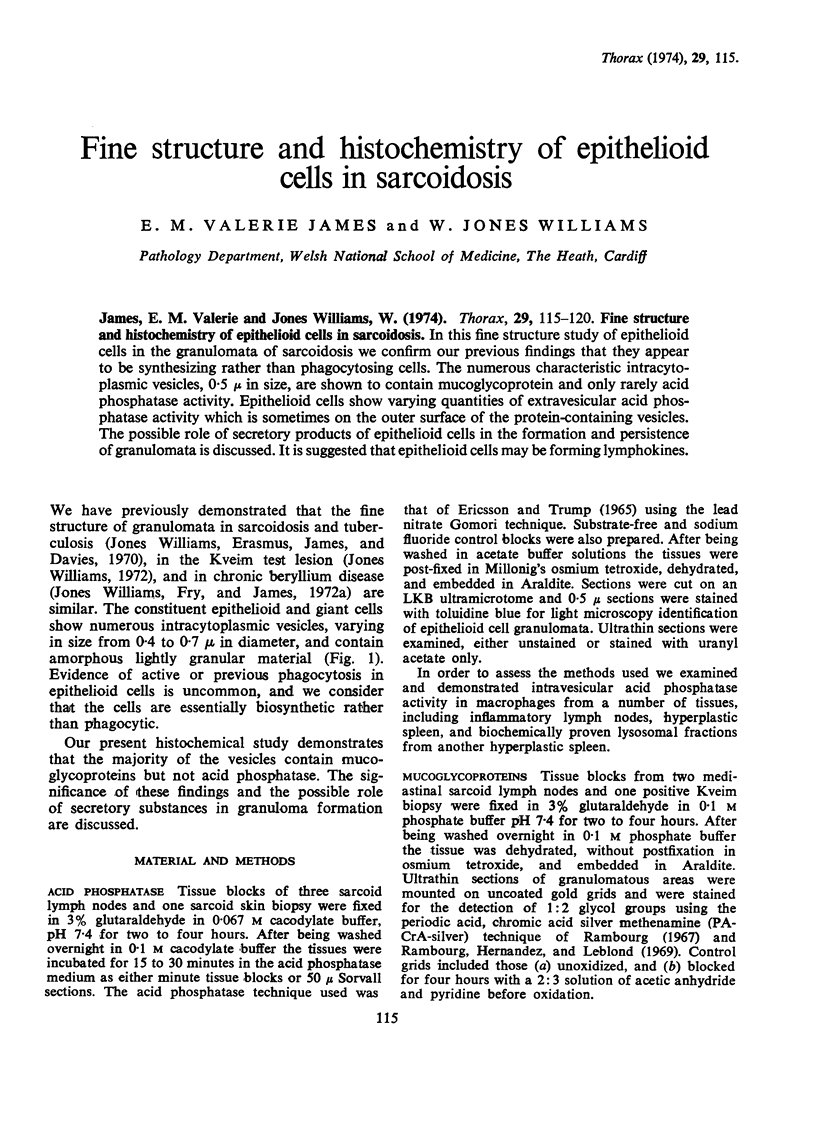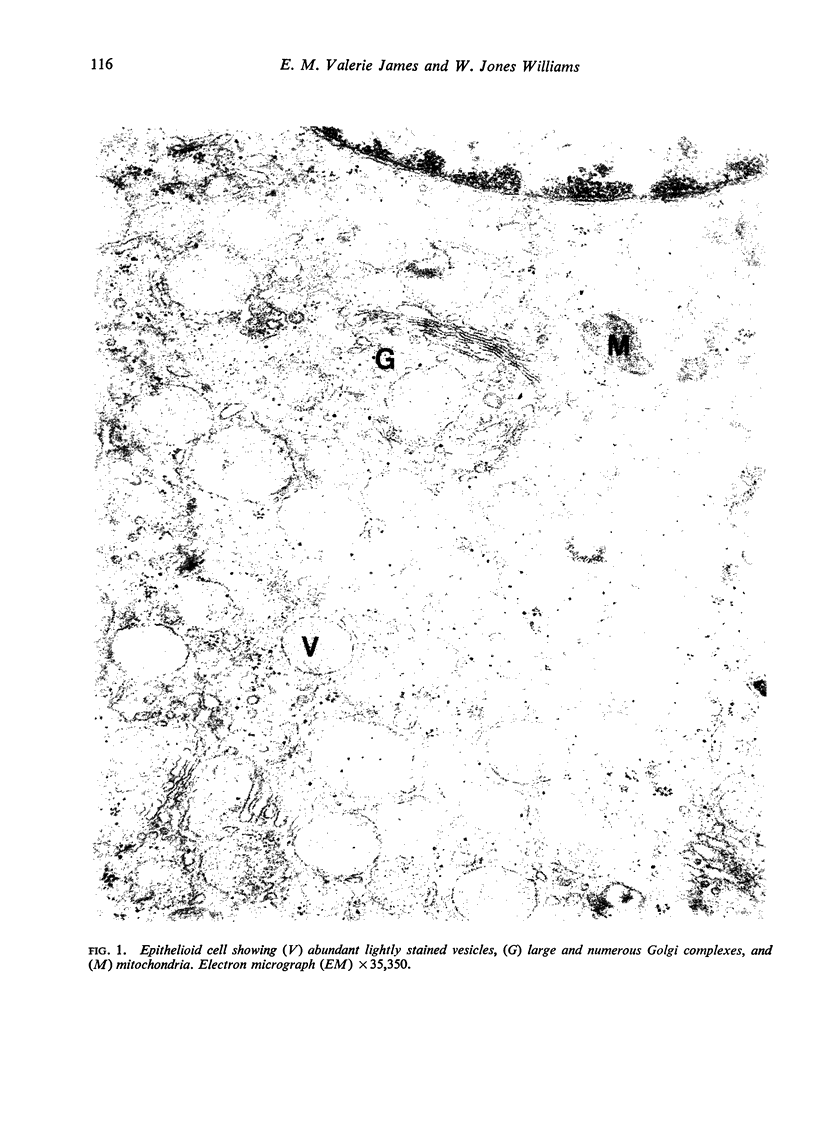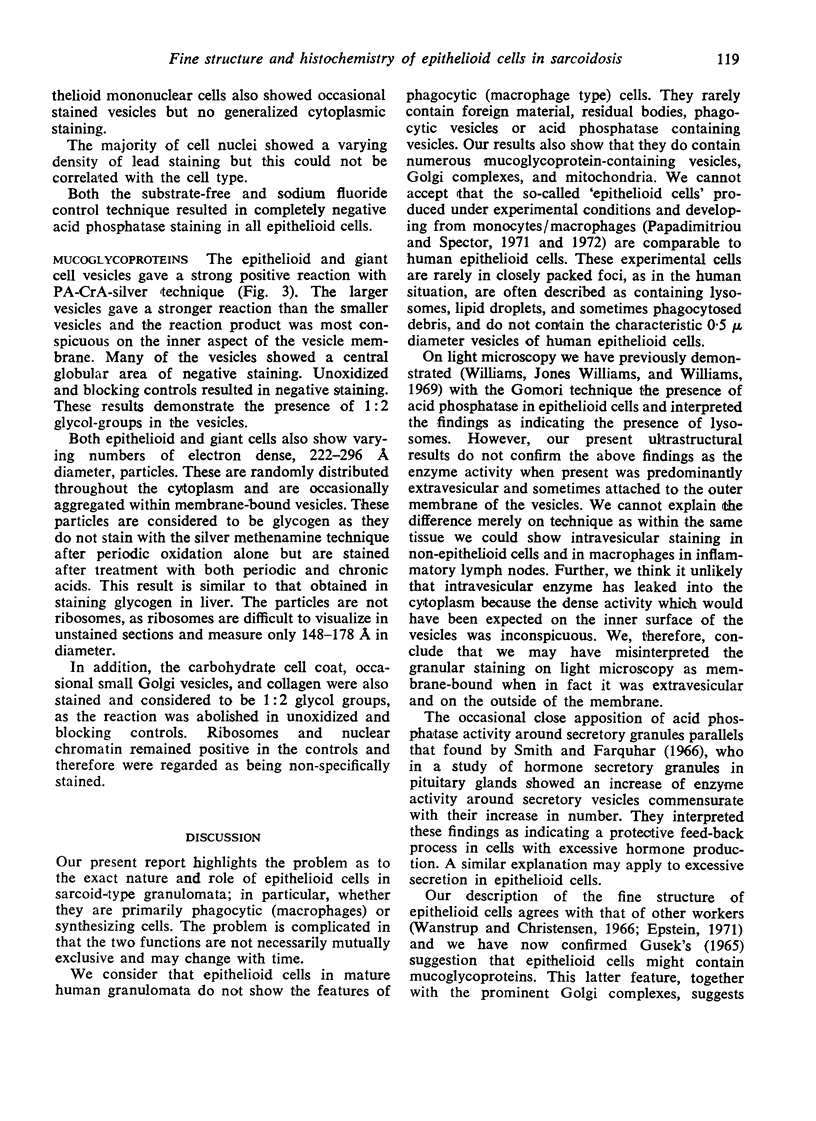Abstract
James, E. M. Valerie and Jones Williams, W. (1974).Thorax, 29, 115-120. Fine structure and histochemistry of epithelioid cells in sarcoidosis. In this fine structure study of epithelioid cells in the granulomata of sarcoidosis we confirm our previous findings that they appear to be synthesizing rather than phagocytosing cells. The numerous characteristic intracytoplasmic vesicles, 0·5 μ in size, are shown to contain mucoglycoprotein and only rarely acid phosphatase activity. Epithelioid cells show varying quantities of extravesicular acid phosphatase activity which is sometimes on the outer surface of the protein-containing vesicles. The possible role of secretory products of epithelioid cells in the formation and persistence of granulomata is discussed. It is suggested that epithelioid cells may be forming lymphokines.
Full text
PDF





Images in this article
Selected References
These references are in PubMed. This may not be the complete list of references from this article.
- Becker F. W., Krull P., Deicher H., Kalden J. R. Leucocyte-migration test in sarcoidosis. Lancet. 1972 Jan 15;1(7742):120–123. doi: 10.1016/s0140-6736(72)90681-2. [DOI] [PubMed] [Google Scholar]
- Dumonde D. C. 'Lymphokines': molecular mediators of cellular immune responses in animals and man. Proc R Soc Med. 1970 Sep;63(9):899–902. [PMC free article] [PubMed] [Google Scholar]
- Ericsson J. L., Trump B. F. Observations on the application to electron microscopy on the lead phosphate technique for the demonstration of acid phosphatase. Histochemie. 1965 Mar 5;4(6):470–487. doi: 10.1007/BF00281900. [DOI] [PubMed] [Google Scholar]
- Papadimitriou J. M., Spector W. G. The origin, properties and fate of epithelioid cells. J Pathol. 1971 Nov;105(3):187–203. doi: 10.1002/path.1711050305. [DOI] [PubMed] [Google Scholar]
- Rambourg A. An improved silver methenamine technique for the detection of periodic acid-reactive complex carbohydrates with the electron microscope. J Histochem Cytochem. 1967 Jul;15(7):409–412. doi: 10.1177/15.7.409. [DOI] [PubMed] [Google Scholar]
- Rambourg A., Hernandez W., Leblond C. P. Detection of complex carbohydrates in the Golgi apparatus of rat cells. J Cell Biol. 1969 Feb;40(2):395–414. doi: 10.1083/jcb.40.2.395. [DOI] [PMC free article] [PubMed] [Google Scholar]
- Remold H. G., David J. R. Further studies on migration inhibitory factor (MIF): evidence for its glycoprotein nature. J Immunol. 1971 Oct;107(4):1090–1098. [PubMed] [Google Scholar]
- Wanstrup J., Christensen H. E. Sarcoidosis. 1. Ultrastructural investigations on epithelioid cell granulomas. Acta Pathol Microbiol Scand. 1966;66(2):169–185. doi: 10.1111/apm.1966.66.2.169. [DOI] [PubMed] [Google Scholar]
- Williams D., Williams W. J., Williams J. E. Enzyme histochemistry of epithelioid cells in sarcoidosis and sarcoid-like granulomas. J Pathol. 1969 Apr;97(4):705–709. doi: 10.1002/path.1710970416. [DOI] [PubMed] [Google Scholar]
- Williams W. J., Fry E., James E. M. The fine structure of beryllium granulomas. Acta Pathol Microbiol Scand Suppl. 1972;233:195–202. [PubMed] [Google Scholar]
- Williams W. J., James E. M., Erasmus D. A., Davies T. The fine structure of sarcoid and tuberculous granulomas. Postgrad Med J. 1970 Aug;46(538):496–500. doi: 10.1136/pgmj.46.538.496. [DOI] [PMC free article] [PubMed] [Google Scholar]
- Williams W. J., Pioli E., Jones D. J., Dighero M. The Kmif (Kveim-induced macrophage migration inhibition factor) test in sarcoidosis. J Clin Pathol. 1972 Nov;25(11):951–954. doi: 10.1136/jcp.25.11.951. [DOI] [PMC free article] [PubMed] [Google Scholar]





